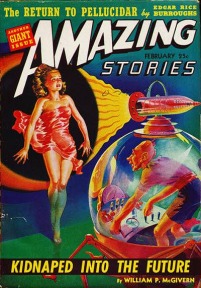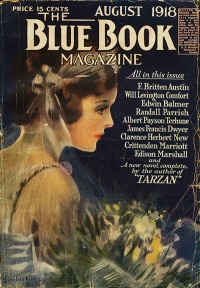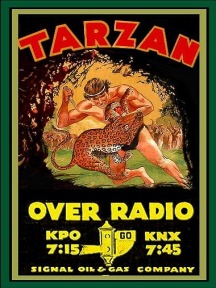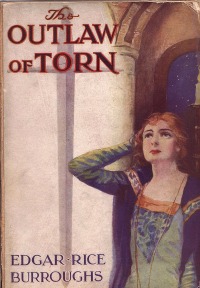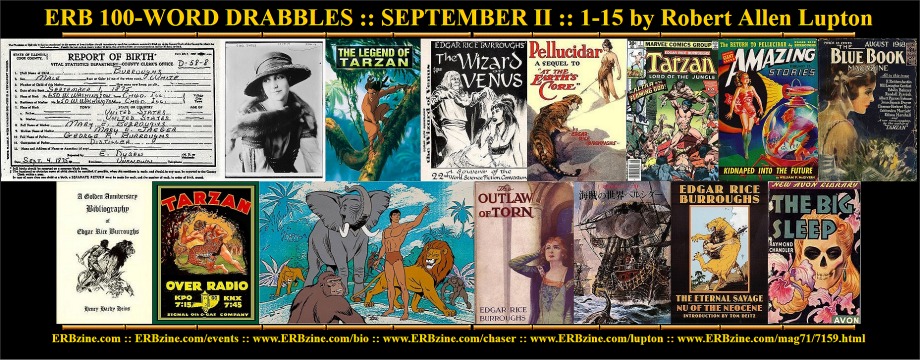
Official Edgar Rice Burroughs Tribute and Weekly Webzine Site Since 1996 ~ Over 15,000 Webpages in Archive Volume 7159 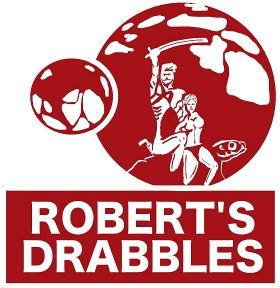 |
ERB 100-Word Drabbles
SEPTEMBER II Edition :: Days 1 - 15
See Days 16 - 30 at ERBzine 7159a
by Robert Allen Lupton
With Collations, Web Page Layout and ERBzine Illustrations and References by Bill Hillman
BIRTHDAY IN THE PARK
September 1: Happy Birthday Edgar Rice Burroughs who was born on this day in 1875 in Chicago, Illinois. He was of almost entirely English ancestry, with a family line that had been in North America since the Colonial era.
The Burroughs side of the family immigrated to Massachusetts. Many of his ancestors fought in the American Revolution. Some of his ancestors settled in Virginia during the colonial period, and Burroughs often emphasized his connection with that side of his family, seeing it as romantic and warlike and no less than seven signers of the U.S. Declaration of Independence were his cousins, including his third cousin, four times removed, 2nd President of the United States John Adams.
Edgar Rice Burroughs Incorporated celebrated the day by publishing a number of books on September first over the years: Tarzan Triumphant (1932), Tarzan and the City of Gold (1933), Tarzan and the Lion Man (1934) Tarzan’s Quest (1935) and I Am a Barbarian (1967).
Additionally, “At the Earth’s Core” starring Doug McClure, Peter Cushing and Caroline Munro was released on September 1, 1977. Artist Frank Schoonover died on this day in 1972 and artist Joe Jusko was born in 1959.
“Birthday in the Park” is today’s Edgar Rice Burroughs inspired drabble.
BIRTHDAY IN THE PARK
![]()
“Let’s go to Audubon Park and do some Tarzan yells.”
“In costume?”
“Hell, yes.”
“John, I’ve got some 40 year old whiskey. We should smoke a cigar and toast the master.”
“Okay, Pat, I’ll bring a cake.”
The more they drank, the louder the victory cry of the apes became until they were arrested. Pat said,
“What’s the charge, officer?”
“Drunk, disorderly, disrobed, and more importantly, off key.”
“That’s Tarzan’s yell.”
“No, you sound like sick calves. If Weissmuller sounded like that, they’d have never sold a ticket.”
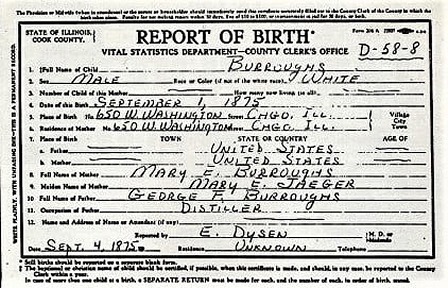
WHOSE LION IS IT
September 2: On this day in 1985, actress Ethyl Selina Dwyer died in Pittsburgh, Pennsylvania. Ethyl played Jane opposite Ronald Adair as Tarzan in the short lived 1921 stage play, “Tarzan of the Apes.”
Tarzan made its debut on the New York stage on September 7, 1921 at the Broadhurst Theater, Forty-fourth street and Broadway in New York. The play was more daring than the British version; the Broadhurst production had real lions on stage — two of them. Jim, the original Tarzan lion, and Beauty, the lioness.
Jim the Lion got loose backstage during a matinee and hastened the early close of the show with his royal roars, heard in nearby Broadway houses. The play closed after only 14 performances.
Three films featuring Ethyl were released in 1921, all westerns: “Ten Nights in a Barroom," ”The Cowboy Ace,” and “Cotton and Cattle.” She retired from acting in 1924.
“Whose Lion Is It” is today’s drabble inspired by Edgar Rice Burroughs, Ethyl Dwyer, and Jim, the lion.
WHOSE LION IS IT
![]()
The stage manager yelled, “Places everyone. Ethyl, I need you on stage. Someone shut up that damn lion.”
Ethyl yelled back. “I’m not going anywhere. Jim, the lion, is loose. I’m staying where I am until he’s under control.”
The lion roared louder. The audience was uneasy. The stage manager shouted at Ronald Adair.
“Tarzan, put Jim back in his cage.”
Adair joined Ethyl in the rigging. “I can’t.”
“Why not.”
“I wouldn’t know what to say. It’s not my lion.”
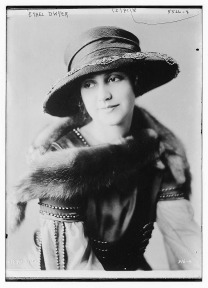
A RACE AGAINST TIME
September 3: On this day in 2001, Disney’s ‘Legend of Tarzan’ debuted on television. There were 39 episodes, but only 36 have been aired. (The 3 "missing" episodes were combined with interstitials to make the direct-to-home-video movie "Tarzan & Jane")
Michael T. Weiss voiced Tarzan, Olivia d’Abo voiced Jane Porter and Jeff Bennett voiced Professor Porter. Jim Cummings voiced Tantor and April Winchell was Terk. The series featured a number of guest stars. Diahann Carroll made a few appearances as Queen La of Opar, Sheena Easton played Dr. Robin Doyle and Rene Auberjonois played Renard Dumont. Other stars to make appearances on the show include Ron Perlman, Brock Peters, Bruce Campbell, Susan Blakeslee, Neil Patrick Harris, Lance Henriksen, Jason Alexander, Mark Harman, Steven Weber and Clarence Williams III (Mod Squad). Hell of a cast.
Weber voiced a fictionalized version of Tarzan's creator, he is an American book author, who was in need of inspiration for his next novel. He eventually finds it when discovering about Tarzan. After meeting some of Tarzan's acquaintances, he finally meets Tarzan when Tarzan saves him. After a talk with Tarzan and Jane, he creates a novel (in comparison to the real version of it), and his boss says everyone will remember him by it. The first episode, the one that aired on September 3, 2001 was
“A Race Against Time.” That’s also the title of the drabble for today.
A RACE AGAINST TIME
![]()
While Terk pouted, a poisonous spider bit Tarzan. The cure was the Mububu flower. Terk made retrieving the flower from a waterfall’s crest a contest between her and Jane.
Neither could climb the waterfall alone and they were forced to help each other. Together they saved Tarzan. Jane said, “If Tarzan dies while we fight each other, no-one wins.”
Terk replied, “Like lions who fighting while the antelope
escapes. Hunt together, fight later.”
“I don’t want to fight.”
"Neither do I. It takes both of us to take care of
him.”
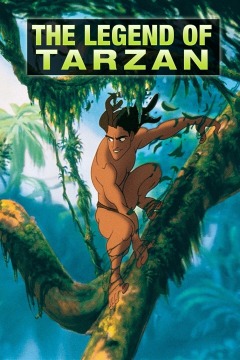
TELEPATHIC COMMUNICATION
September 4: On this day in 1964, “The Wizard of Venus,” a graphic adaption by Dale Broadhurst and Mike Royer was introduced as a souvenir at Pacificon II, the 22nd Worldcon in Oakland California. Harry Habblitz did the cover art. The thirty-eight page booklet was stapled and 7” by 9”.
“The Wizard of Venus” was written between January and October 1941 by Edgar Rice Burroughs, Wizard lay undiscovered in the company safe until first published in the 1964 Canaveral anthology “Tales of Three Planets,” which also paired for the first time the previously unpublished segment “Tangor Returns” with “Beyond the Farthest Star”, and an amusing short novel "The Resurrection of Jimber-Jaw," previously published in the February 20, 1937 issue of Argosy.
As I write this post, there is one copy for sale on EBAY - $100.00. The entire adaption is available at : https://www.erbzine.com/mag45/4565.html
The Edgar Rice Burroughs inspired drabble for today is “Telepathic Communication.”
TELEPATHIC COMMUNICATION
![]()
On Venus he encountered a self-proclaimed Wizard named Morgas, who used hypnotism to make people believed that they had been turned into animals. He used this ability to enslave entire cities.
Carson battled Morgas using his telepathic powers to make Morgas see powerful warriors controlled by Carson. The wizard cowered in fear and jumped to his death from a parapet.
I’m sending the last part of this drabble telepathically, so if you think it’s funny – it was from me.”
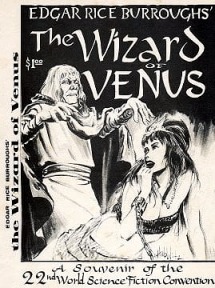
THE LAST TIME
September 5: On this day in 1923, A. C. McClurg published “Pellucidar,” the sequel to “At The Earth’s Core.”
The 321 page novel had a first edition print run of 10,000 copies. It has been reprinted frequently. Grosset & Dunlap reprinted it numerous times from 1924 through 1928 and again in 1940. Ace and Ballantine printed several paperback versions. Canaveral Press printed a hardback and Science Fiction Classics included it in an anthology of five Edgar Rice Burroughs novels in 1982. Dover collected it along with two other “Pellucidar” novels in 1963 as “Three Science Fiction Novels" by Edgar Rice Burroughs.
J. Allen St. John, Roy Krenkel, Frank Frazetta, Mahon Blaine and David Mattingly have all created cover art for one edtion or another.
The publishing history of the book and several illustrations are available at:
https://www.erbzine.com/mag7/0742.html
“The Last Time” is today’s drabble. If you listen closely, you can hear the downbeat and a guitar riff.
THE LAST TIME
![]()
“Maybe years on the surface, but here in the land of the eternal sun, I had the time of my life."
“Does anybody really know what time it is?”
“David, I don’t worry about it. Time is on my side.”
Suddenly, a Saggoth attacked. David took a boulder and hit him. The Saggoth fell and rolled down the hill into the inland sea.
David said, “I call that old time rock and roll.”
Abner said, “Do that to him one more time.”
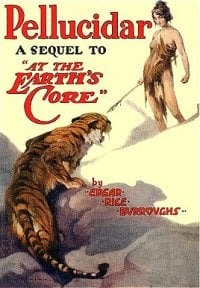
LOVE WILL KEEP US TOGETHER
September 6: On this day in 1915, Edgar Rice Burroughs began writing the fifth Tarzan novel, “Tarzan and the Jewels of Opar.” He finished the story in October 2015. The novel was serialized by All-Story Weekly, published by A. C. McClurg in a first edition print run of 50,000 copies, reprinted by McClurg, A. L. Burt, Grosset & Dunlap, Ace, Ballantine, Del Rey, and the House of /Greystoke – and that’s just in America. There was a Big Little Book and a daily comic strip drawn by Rex Maxon. Marvel Comics did a great adaption feature John Buscema art.
Publication details may be read at : https://www.erbzine.com/mag4/0490.html
“Love Will Keep Us Together” is today’s Edgar Rice Burroughs inspired drabble. I can’t seem to stay away from rock and roll references this week.
LOVE WILL KEEP US TOGETHER
![]()
La held an obsidian blade overhead and chanted to unnamed gods.
Tarzan said, “Perhaps we could talk. I’m willing to reconsider our relationship.”
She touched his chest with the knife. “Too little, too late. No man spurns La’s love.”
Tarzan batted his eyes. La said, “You think because you’re such a pretty boy, I’ll forgive you.”
Tarzan smiled. La’s eyes flashed angrily. “Damn your lyin’ eyes. I hate myself for loving you.”
She cut him loose. “Run,” she said. “It’s time to run through the jungle.”
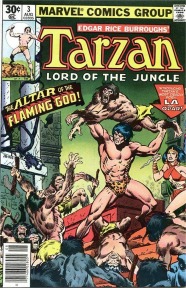
TIME WARP
September 7: On this day in 1940, Edgar Rice Burroughs began writing the first installment of “Savage Pellucidar.” “Return to Pellucidar” had the working title, “Hodon and O-aa,” and was published in the February 1942 issue of Amazing stories. J. Allen St. John drew two interior illustrations. Edgar Rice Burroughs and ”Return to Pellucidar” are mentioned “above the fold” on the cover, but the cover illustration was for “Kidnapped Into the Future” by William P McGivern.
The issue included stories by Ray Palmer, Robert Moore Williams, Ralph Milne Farley,Issac Asimov, and Eric Frank Russell. Frank R. Paul drew the rear cover. Pretty good lineup, all in all.
For details about “Return to Pellucidar” and the other three tales that make the book “Savage Pellucidar - see
https://www.erbzine.com/mag7/0747.html
Today’s drabble, “Time Warp,” is taken from the Amazing Stories preface to “Return to Pellucidar.”
TIME WARP
![]()
FLOTSAM
September 8: On this day in 1917, Edgar Rice Burroughs began writing “The Lost U-Boat.” The story would be retitled “The Land That Time Forgot,” and first published in Blue Book magazine in August 2018.
The cover touts a new novel by “the author of Tarzan,” but Burroughs and the new novel are unnamed. The cover, drawn by Hamilton King, features a bride holding a bouquet. For the life of me, I can’t tell what story it’s supposed to illustrate. I don’t think it is for “Contract Patrol,” by Edwin Balmer (co-author of When Worlds Collide), “The Conquering Hero” by Eddison Marshall, or “Chums” by Albert Payson Terhune (Lad, A Dog).
My favorite title in the issue , other than “The Land That Time Forgot, is “A Little Affair in the French Quarter” by James Francis Dwyer, a reformed convict turned writer. Dwyer wrote over 1000 short stories in his career and is noted as the first Australian born person to become a millionaire from writing. Dwyer’s novels include “The City of the Unseen,” “The Spotted Panther,” “Breath of the Jungle,” and “The City of Cobras.” His Pacific Island adventure story, “The White Waterfall” is free to read on Project Gutenberg. He has been largely, if not completely forgotten.
The drabble today is “Flotsam.” Apologies to Jay Ward, Rocket J. Squirrel, and Bullwinkle Jay Moose. Edgar Rice Burroughs wrote the 4th paragraph, which is taken directly from the opening of the novel.
FLOTSAM
![]()
Two men fished it from the sea. One opened it, removed
a manuscript, and began to read.
“Is it a friendly message?”
“Friendly, just listen. It says,’ I’ve seen with my
own eyes in this brief interval of time, things that no other mortal eye
had seen before, glimpse of a world past, a world dead, a world so long
dead that even in the lowest Cambrian stratum not trace of it remains.”
“Don’t sound friendly to me.”
THE GOOD BOOK
September 9: On this day in 1964, the Reverend Henry Hardy Hein’s magnificent book, “A Golden Anniversary Bibliography of Edgar Rice Burroughs,” was published by Donald M. Grant. The book was updated and republished in a slipcased edition in 2001. The first edition was published in a print run of 1000 copies. Several copies are available on EBay with prices ranging from $50.00 to over $200.00. Interesting enough, the 2001 edition is consistently priced higher than the 1964 first edition.
Details about the book are located at: https://www.erbzine.com/mag8/0894.html
Today’s 100 word drabble, “The Good Book,” is taken from Hulbert Burroughs’ foreword to the bibliography.
THE GOOD BOOK
![]()
I’m appalled by the tremendous amount of physical effort, time and research that must have gone into this book. The sincerest tribute I can pay to its compiler is that in the course of my work at ERB, Inc., seldom a day passes that doesn't find me referring to this Bibliography.
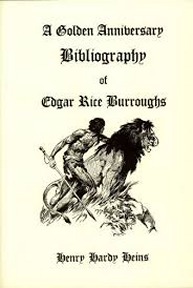
TURN YOUR RADIO ON
September 10: On this day in 1932, the Tarzan radio program began. It featured Joan Burroughs and her husband, James H. Pierce, as Tarzan and Jane. Signal Oil and Gas sponsored the show. “The Power of Tarzan” is in the fuel for your car.
A special stage premier for the show took place at the Fox Pantages Theater in Hollywood. The entire cast was present and thousands of fans, including Johnny Weissmuller, attended the premier. Edgar rice Burroughs supervised the scripts.
Details on the premier are available at:
https://www.erbzine.com/mag1/0169.html
and all 77 episodes of this series are available to hear at
https://www.erbzine.com/mag27/2728.html
Today’s drabble, “Turn Your Radio On,” is excerpted from the September 1932 edition of the “Signal News,” Signal Oil’s in house magazine.
TURN YOUR RADIO ON
![]()
Congratulations were received on every side by the Signal Oil and Gas Company on the World Premier which introduced the Company's thrilling Tarzan radio broadcasts.
Judging from phone calls to the radio stations, dealer reports from customers, as well as the universal enthusiasm and interest displayed everywhere by grown-ups as well as kids, it can conservatively be said that Signal's "Tarzan Over Radio" is off to a flying start.”
I AM TARZAN
September 11: On this day in 1976, the Filmation animated series, “Tarzan, Lord of the Jungle,” debuted on Saturday morning television.
Robert Ridgely did the voice of Tarzan for all 36 episodes, which were featured in “Tarzan, Lord of the Jungle,” “The Batman /Tarzan Adventure Hour, and “Tarzan and the Super 7.”
Ridgely appeared on “Sea Hunt.” “Maverick,” “Bonanza,” WKRP in Cincinnati,” “Night Court,” “Wings,” and “Designing Women.” On the big screen he played in “Blazing Saddles,” “High Anxiety,” “Life Stinks,” “Robin Hood: Men in Tights,” “Beverly Hills Cop II.” “Boogie Nights,” and “Heart Like a Wheel.” He voiced “The New Adventures of Flash Gordon,” and “Thundarr, the Barbarian.”
Jane only appeared once in the series and she was voiced by Linda Gary. Linda, a voice actress, also did work for “The Land Before Time” series, He-Man and She Ra, Transformers, G. I. Joe, and the short lived Spiderman animated television series.
Note: The Tarzan "yell" in the programs was voiced by ERB's grandson - Danton Burroughs. ~ BH
For an episode list and details about the series go to:
https://www.erbzine.com/mag0/0014.html
The drabble for today is “I Am Tarzan.” It is the intro to each episode of the animated series.
I AM TARZAN
![]()
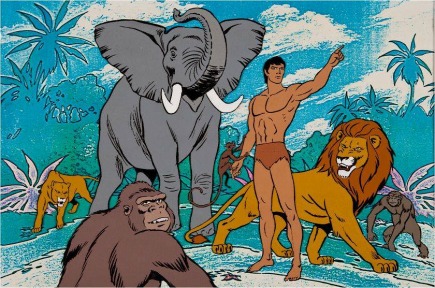
SCOREBOARD
September 12: On this day in 1927, publisher A. C. McClurg reported that sales of Edgar Rice Burroughs books in the United States and Great Britain to be 6,350,000 copies. It is not clear what time period the report covered, but six million copies is six million copies. Pretty damn impressive numbers for any writer over any time period.
The top selling individual books in the USA in 1927 were, “Elmer Gantry” by Sinclair Lewis, “The Plutocrat” by Booth Tarkington, “Doomsday” by Warwick Deeping, “Jalna” by Mazo de la Roche, “Lost Ecstasy” by Mary Roberts Rinehart, and “Twilight Sleep” by Edith Warton.
The drabble today, inspired by Edgar Rice Burroughs and a sportscaster named Jim Rome is “Scoreboard.”
SCOREBOARD
![]()
“Great news. I assume the checks are in the mail.”
“Of course, Ed. Looking forward to your next story. You outsold ‘Elmer Gantry” by Sinclair Lewis and “The Plutocrat” by Booth Tarkington.
“I should hope so. I had a much better year than Lewis. I know Tarzan had a better year than Elmer Gantry. As for the Plutocrat, the protagonist, Lawrence Ogle, the young playwright who went to Tarkington’s Africa – he wouldn’t have survived an hour in Tarzan’s world.
TANAR
September 13: On this day in 1928, Edgar Rice Burroughs began writing “Tanar of Pellucidar” while living at the Sea View Terrace in Santa Monica, California. He dedicated the book to his granddaughter, Joan Burroughs Pierce II. The novel was serialized by Blue Book Magazine in monthly installments from March through August in 1929. Artist Frank Hoban drew all six covers and several black and white interior illustrations.
Metropolitan published the first edition of the book in 1930. The story was reprinted by Grosset & Dunlap several times, and also by Canaveral Press, Ace, Ballantine, and Dover.
Detailed information and several cover art illustrations are available at:
https://www.erbzine.com/mag7/0743.html
The drabble today, “Tanar,” is taken from the dust jacket blurb on the first edition. The spelling, capitalization and lack thereof, and wording hasn’t been changed.
TANAR
![]()
In Pellucidar dwell the Buried People, here is the Land of Awful Shadow, here the Kosar pirates terrorize the towns. Reptiles of gigantic size, saber-toothed tigers, ferocious cave-bears and huge mastodons roam the wilderness.
Now menace threatens. Tanar, the young chieftain, is carried off by the piratic Kosars. Tanar meets the lovely Stellara and in this strange world of primitive terror he struggles for life and the girl he loves.
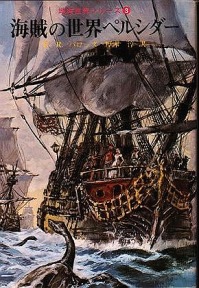
IF YOU'VE GOT THE TIME
September 14: On this day in 1914, Edgar Rice Burroughs finished writing “Sweetheart Primeval,” the second half of “The Eternal Lover.” “Sweetheart” was originally serialized in four installments of All-Story Weekly from January 23, 3015 through February 13, 1915.
“Idle Hour Magazine” published the first six chapters of “The Eternal Lover,” in November and December of 1915. I’ve never seen a copy of the magazine or even a picture of the cover. If anyone has either issue, I’d love to see a photograph.
A. C. McClurg published the first edition ten years later, in 1925, and Grosset & Dunlap reprinted it in 1927 and 1940. After that it was out of print until Ace Books published a paperback in 1963. Ballantine published a paperback version in 1992 and Nebraska Press (Bison Books) also reprinted the book in 2003.
The drabble today is “If You’ve Got the Time.” Thanks to Edgar Rice Burroughs and an unknown copywriter who worked for Miller Brewing in the late 1970s.
IF YOU'VE GOT THE TIME
![]()
The bear skin would pledge his love, but time was short. Nat-al would marry another in two days if Nu didn’t hunt successfully. No time to tarry.
He hunted in vain. With only hours remaining, three children found Nu. “Come with us.”
“I can’t. I must find a bear and quickly slay it.”
“We’ve found one. Come with us. If you’ve got the time, we’ve got the bear.”
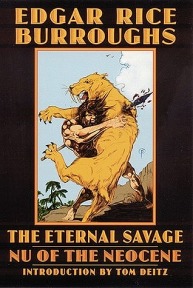
BAD EDITOR
September 15: On this day in 1927, A. C. McClurg published the first edition of “The War Chief,” with cover art by Paul Stahr. The cover was the same illustration used for the first installment of the story published in Argosy All-Story on April 16, 1927. The book was reprinted by Grosset & Dunlap from1928 through 1931– after which it remained out of print in America for fifty-three years – until reprinted by Ballantine in 1964.
Paul Carl Stahr Jr. (1883-1953) was born in New York City. He studied art at the National Academy of Design where he graduated with honors. In 1905 he also studied at the Arts Students League. In 1913 his drawings were published in the People’s Home Journal, and this began his career as a magazine illustrator. Stahr’s work would go on to appear in several other magazines like LIFE, The Saturday Evening Post, and Collier’s regularly.
During World War I, Stahr began painting posters for organizations like the Red Cross, Liberty Loans, and National Defense. Starting in 1924 he spent 10 years creating pulp magazine covers for Argosy Magazine. He also painted a few book covers, including The Big Sleep by Raymond Chandler. He died at the Long Beach Hospital in January of 1953. He created five covers for The Saturday Evening Post.
The illustration with this post is of the Avon paperback edition of “The Big Sleep.” Sources credit this as being the Paul Stahr cover, but I haven’t been able to verify that to my satisfaction, nevertheless, it’s an awesome cover.
The drabble for today is “Bad Editor” and it was written By Edgar Rice Burroughs concerning the ‘editing’ done for the first magazine publication of “The Apache Devil.”. It’s been modified slightly to fit the 100 word drabble format. The complete Burroughs’ response may be read at:
https://www.erbzine.com/mag7/0773.html
BAD EDITOR
![]()
The manuscript required considerable research work and since it’s necessary for the reader to understand the Indian’s viewpoint, it’s essential that much of the matter deleted should remain even though it may be odious to some and sometimes shocking to others whose religious convictions are particularly strong.
The magazine editor deleted what evidently appeared to him tiresome descriptions of Indian customs, but there is not a great deal of this and as it is all based on good authority, it should be permitted to remain."
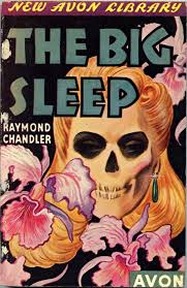
![]()
See
Days 16-30 at ERBzine 7159a
![]()
SEPTEMBER II ILLUSTRATIONS COLLAGE
![]()
